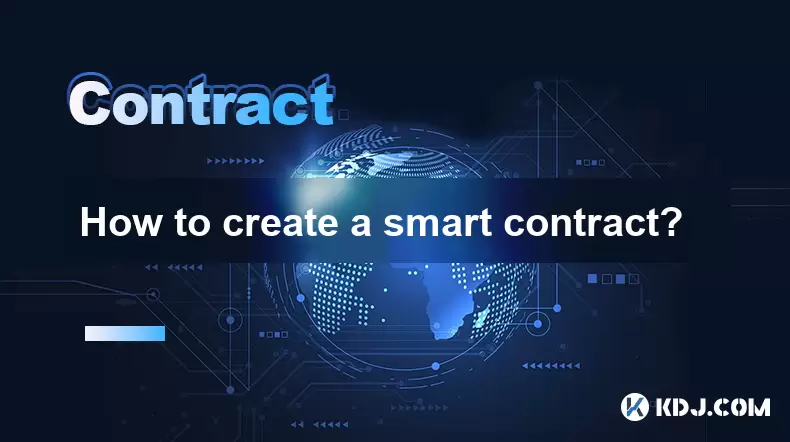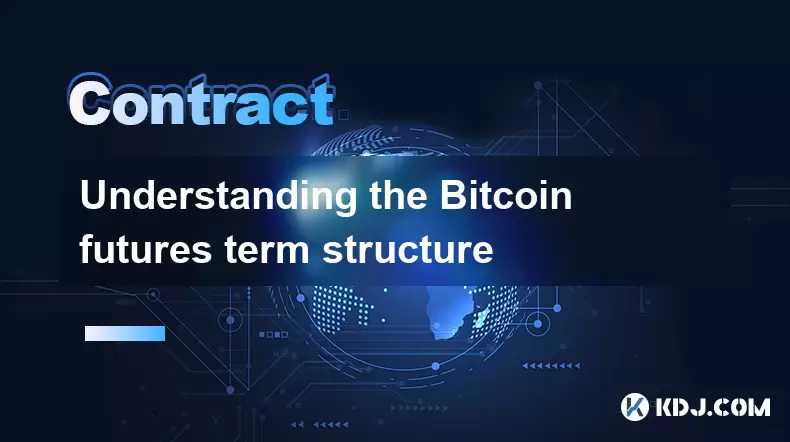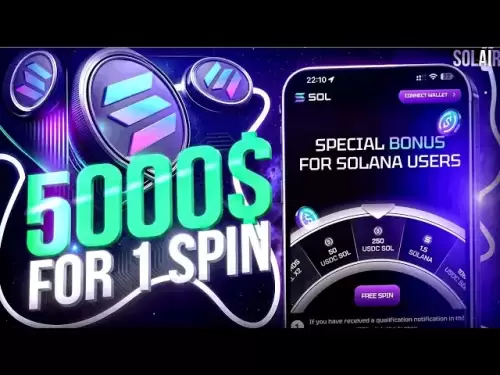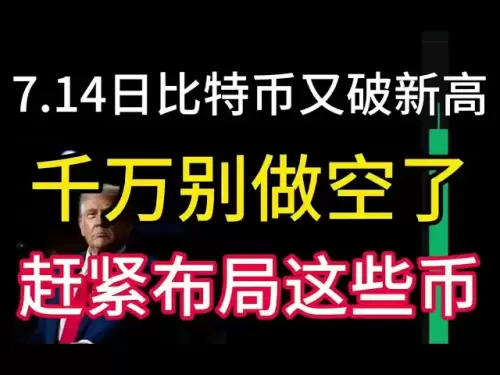-
 Bitcoin
Bitcoin $122,606.5469
4.05% -
 Ethereum
Ethereum $3,030.9726
2.47% -
 XRP
XRP $2.9632
5.89% -
 Tether USDt
Tether USDt $1.0001
-0.02% -
 BNB
BNB $703.7501
1.91% -
 Solana
Solana $166.4981
2.63% -
 USDC
USDC $0.9998
-0.01% -
 Dogecoin
Dogecoin $0.2059
3.75% -
 TRON
TRON $0.3034
0.82% -
 Cardano
Cardano $0.7534
1.69% -
 Hyperliquid
Hyperliquid $48.5519
1.41% -
 Stellar
Stellar $0.4752
7.04% -
 Sui
Sui $3.9140
13.90% -
 Chainlink
Chainlink $16.0052
4.10% -
 Hedera
Hedera $0.2481
7.89% -
 Bitcoin Cash
Bitcoin Cash $517.9548
2.40% -
 Avalanche
Avalanche $21.7177
2.16% -
 UNUS SED LEO
UNUS SED LEO $9.0350
0.04% -
 Shiba Inu
Shiba Inu $0.0...01373
4.00% -
 Toncoin
Toncoin $3.0283
0.75% -
 Litecoin
Litecoin $96.2061
1.75% -
 Polkadot
Polkadot $4.1076
2.82% -
 Monero
Monero $350.3051
3.14% -
 Uniswap
Uniswap $9.2991
9.82% -
 Dai
Dai $0.9998
-0.01% -
 Ethena USDe
Ethena USDe $1.0004
-0.01% -
 Pepe
Pepe $0.0...01260
3.52% -
 Bitget Token
Bitget Token $4.4459
1.08% -
 Aave
Aave $322.7677
6.21% -
 Bittensor
Bittensor $421.8669
8.02%
How to create a smart contract?
Smart contracts are self-executing agreements on blockchain platforms like Ethereum, automatically enforcing terms without intermediaries.
Jul 14, 2025 at 01:14 am

Understanding the Basics of Smart Contracts
A smart contract is a self-executing agreement with the terms of the contract directly written into lines of code. It runs on blockchain platforms, primarily Ethereum, and automatically enforces and executes agreements without intermediaries. To create a smart contract, one must first understand its underlying principles, including blockchain technology, decentralization, and Turing-complete programming languages.
Smart contracts are stored and replicated on the blockchain, ensuring transparency and immutability. They are triggered by specific conditions being met, such as a payment being made or a digital signature being verified. The execution is handled by the network of computers (nodes) running the blockchain, which ensures that the outcome is accurate and tamper-proof.
Selecting the Right Blockchain Platform
Before diving into development, it's crucial to choose a suitable blockchain platform. While Ethereum remains the most popular due to its mature ecosystem and support for Solidity, other platforms like Binance Smart Chain, Polkadot, and Solana offer alternative features and gas fee structures.
Each platform has its own set of tools and languages:
- Ethereum uses Solidity, a JavaScript-like language specifically designed for writing smart contracts.
- Binance Smart Chain also supports Solidity, making it easy to port contracts between Ethereum and BSC.
- Polkadot allows for cross-chain interoperability using Substrate-based frameworks.
- Solana employs Rust and C for high-performance contracts.
Developers should evaluate factors such as transaction speed, costs, community support, and security audits before selecting a platform.
Setting Up the Development Environment
To begin coding a smart contract, you need to configure your development environment properly. This involves installing several tools and setting up accounts:
- Install Node.js and npm: These are essential for running many development tools.
- Install Truffle Suite: A popular development framework for Ethereum-based contracts.
- Set up MetaMask: A browser extension wallet used to interact with the blockchain.
- Choose an IDE: Tools like Remix IDE, Visual Studio Code, or Hardhat provide robust environments for writing and testing contracts.
Once the environment is ready, connect MetaMask to a testnet like Rinkeby or Goerli to deploy and test contracts without spending real Ether.
Writing Your First Smart Contract in Solidity
Let’s walk through creating a basic smart contract using Solidity. This example will be a simple token transfer function:
pragma solidity ^0.8.0;contract SimpleToken {
string public name = "Simple Token";
string public symbol = "STK";
uint256 public totalSupply = 1000000;
mapping(address => uint) public balances;
constructor() {
balances[msg.sender] = totalSupply;
}
function transfer(address to, uint amount) external {
require(balances[msg.sender] >= amount, "Insufficient balance.");
balances[msg.sender] -= amount;
balances[to] += amount;
}
}
This contract defines a token with a name, symbol, and supply. The transfer function allows users to send tokens to another address, provided they have sufficient balance. Each line of code plays a critical role in ensuring functionality and security.
Key elements include:
- State variables: Stored permanently on the blockchain.
- Functions: Define actions users can perform.
- Events: Optional but useful for logging changes.
- Modifiers and require statements: Enforce conditions during execution.
Deploying and Testing the Smart Contract
After writing the contract, the next step is deployment. Use Truffle or Remix IDE to compile and deploy the contract to a testnet:
- In Remix, navigate to the Deploy & Run Transactions tab.
- Select the environment as Injected Web3 to connect with MetaMask.
- Choose the contract and click Deploy.
- Confirm the transaction in MetaMask.
Once deployed, interact with the contract via the Read/Write Contract section in Remix or through DApp interfaces. Test all functions thoroughly:
- Check if the totalSupply is assigned correctly.
- Verify that transfers deduct from the sender and add to the recipient.
- Attempt invalid transfers to ensure require statements prevent them.
Use event logs to track transactions and debug any issues. Also, consider using hardhat console.log or ethers.js for more advanced debugging.
Securing Your Smart Contract
Security is paramount when dealing with smart contracts, as vulnerabilities can lead to significant financial loss. Common risks include reentrancy attacks, integer overflow/underflow, and unprotected functions.
Best practices for securing your contract:
- Use SafeMath library to prevent arithmetic errors.
- Apply access control modifiers to restrict sensitive functions.
- Avoid external calls unless necessary.
- Conduct unit tests using frameworks like Mocha or Jest.
- Perform manual audits or use automated tools like Slither or MythX.
Never skip thorough testing and peer reviews before deploying a contract to the mainnet.
Frequently Asked Questions
Q: Can I create a smart contract without coding experience?
A: Yes, platforms like OpenZeppelin Contracts Wizard or DAOstack Alchemy allow users to generate contracts using templates and graphical interfaces without needing deep coding knowledge.
Q: How much does it cost to deploy a smart contract?
A: Deployment costs depend on the blockchain and current network congestion. On Ethereum, fees (gas) can range from $10 to over $100 during peak times. Using Layer 2 solutions or BSC can significantly reduce costs.
Q: What happens if there's a bug in my deployed smart contract?
A: Once deployed, smart contracts are immutable. If a bug is found, you may need to deploy a new version and migrate data, or implement a proxy contract for upgrades, though this requires careful planning.
Q: Are there legal implications of using smart contracts?
A: While smart contracts execute automatically, their legal enforceability varies by jurisdiction. Always consult a legal expert to ensure compliance with local laws regarding digital agreements and asset ownership.
Disclaimer:info@kdj.com
The information provided is not trading advice. kdj.com does not assume any responsibility for any investments made based on the information provided in this article. Cryptocurrencies are highly volatile and it is highly recommended that you invest with caution after thorough research!
If you believe that the content used on this website infringes your copyright, please contact us immediately (info@kdj.com) and we will delete it promptly.
- UK Treasury Watch: Bitcoin Surge Lifts Companies Amidst Crypto Optimism
- 2025-07-14 16:30:12
- Finnovex South Africa 2025: Innovation and Expanding Inclusion in the Digital Finance Era
- 2025-07-14 16:30:12
- Pumpfun's $500M ICO: Memecoin Mania or the Future of Funding?
- 2025-07-14 14:30:12
- Dogecoin, XRP Price, and the Bitcoin Bull Run: What's the Hype?
- 2025-07-14 16:10:12
- Pump.fun's $PUMP Token Sale: A Wild Ride in the Memecoin Frenzy
- 2025-07-14 14:30:12
- Bitcoin Blasts Past $120,000 on Coinbase: All-Time Highs and What's Driving the Surge
- 2025-07-14 14:50:12
Related knowledge

Psychology of trading Bitcoin contracts
Jul 13,2025 at 02:50am
Understanding the Emotional Rollercoaster of Bitcoin Futures TradingBitcoin contract trading, especially in the form of futures, introduces a high lev...

Best time of day to trade Bitcoin contracts?
Jul 13,2025 at 05:29am
Understanding Bitcoin Contracts and Their VolatilityBitcoin contracts, particularly futures contracts, are derivative instruments that allow traders t...

How to use Fibonacci levels in Bitcoin contract trading?
Jul 13,2025 at 08:07am
Understanding Fibonacci Levels in TradingFibonacci levels are a technical analysis tool used by traders to identify potential support and resistance z...

Understanding the Bitcoin futures term structure
Jul 13,2025 at 08:28am
What is Bitcoin Futures Term Structure?The Bitcoin futures term structure refers to the relationship between the prices of Bitcoin futures contracts w...

What are the trading hours for Bitcoin futures?
Jul 13,2025 at 12:14pm
Understanding Bitcoin Futures Trading HoursBitcoin futures are derivative contracts that allow traders to speculate on the future price of Bitcoin wit...

Is it possible to trade Bitcoin contracts without leverage?
Jul 14,2025 at 11:00am
Understanding Bitcoin ContractsBitcoin contracts, commonly referred to as Bitcoin futures contracts, are derivative financial instruments that allow t...

Psychology of trading Bitcoin contracts
Jul 13,2025 at 02:50am
Understanding the Emotional Rollercoaster of Bitcoin Futures TradingBitcoin contract trading, especially in the form of futures, introduces a high lev...

Best time of day to trade Bitcoin contracts?
Jul 13,2025 at 05:29am
Understanding Bitcoin Contracts and Their VolatilityBitcoin contracts, particularly futures contracts, are derivative instruments that allow traders t...

How to use Fibonacci levels in Bitcoin contract trading?
Jul 13,2025 at 08:07am
Understanding Fibonacci Levels in TradingFibonacci levels are a technical analysis tool used by traders to identify potential support and resistance z...

Understanding the Bitcoin futures term structure
Jul 13,2025 at 08:28am
What is Bitcoin Futures Term Structure?The Bitcoin futures term structure refers to the relationship between the prices of Bitcoin futures contracts w...

What are the trading hours for Bitcoin futures?
Jul 13,2025 at 12:14pm
Understanding Bitcoin Futures Trading HoursBitcoin futures are derivative contracts that allow traders to speculate on the future price of Bitcoin wit...

Is it possible to trade Bitcoin contracts without leverage?
Jul 14,2025 at 11:00am
Understanding Bitcoin ContractsBitcoin contracts, commonly referred to as Bitcoin futures contracts, are derivative financial instruments that allow t...
See all articles

























































































